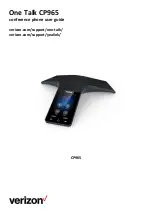
Mobi 3
5
Resistive touch screen
A resistive touch screen is pressure sensitive and can be operated with your fingers and other objects, such as a stylus. In the winter you can also operate the
touch screen with your gloves on. The touch screen consists of 2 layers with an air gap separating them. One of the layers has an electrical voltage applied to it.
By touching the touch screen you bring the two layers into contact with each other.
Advantages:
▪
you can click on pixels very accurately
▪
you can draw something very precisely with a stylus
▪
cheaper
Disadvantages:
▪
A certain pressure must always be exerted on the touch screen. If the expected pressure is not reached, the touch screen can react slowly or poorly.
▪
The touch screen may be less legible in sunlight due to the reflections from the extra layer.
6
Capacitative Touch Screen
A capacitative touch screen can only be operated with your fingers or a stylus that simulates your fingers. The touch screen has a small electrical charge over its
whole surface. When you touch the screen with your finger, the electrical current is interrupted or diverted and this changes the capacitance. Your body conducts
the electricity. The point where this happens is interpreted as a touch on the touch screen.
Advantages:
▪
no pressure is needed to register the touch
▪
the touch screen is very sensitive and its operation is therefore suppler
Disadvantages:
▪
operation is only possible with conductive objects such as a finger or a capacitative stylus.
B
Description and operation
12
6
Capacitative Touch Screen
Summary of Contents for Mobi 3
Page 1: ...Mobi 3 ...
Page 5: ...Mobi 3 A Introduction 3 ...
Page 8: ...Mobi 3 B Description and operation 6 ...
Page 15: ...Mobi 3 C Safety 13 ...
Page 17: ...Mobi 3 D Getting started 15 ...
Page 20: ...Mobi 3 E Control 18 ...
Page 35: ...Mobi 3 F Settings 33 ...
Page 44: ...Mobi 3 G Maintenance and troubleshooting 42 ...
Page 49: ...Mobi 3 H Decommissioning and disposal 47 ...
Page 54: ...Mobi 3 52 ...















































